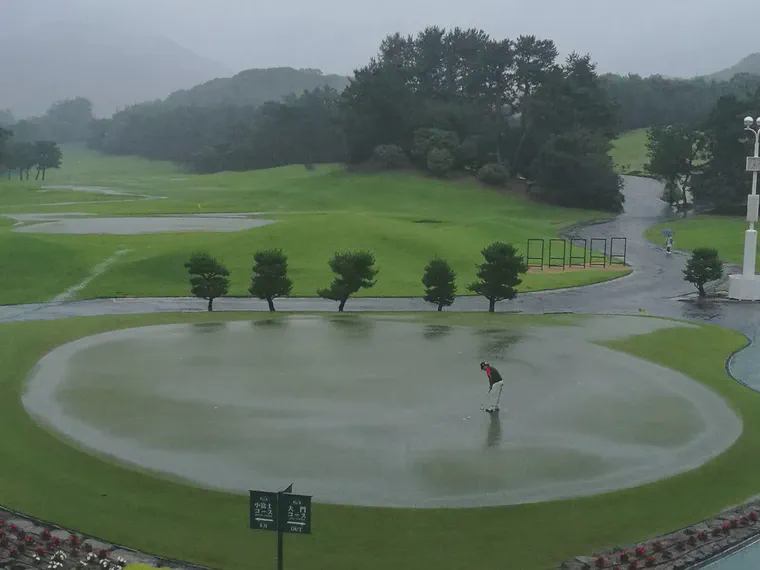After 17 inches of rain, how much K leached?
Or, cation exchange capacity really works
When I was at Keya GC last month for the Japan Amateur Championship, it rained a lot. From June 29 to July 8, there was precipitation every day, and the total was 446 mm, or 17.6 inches.
Andrew McDaniel suggested that it would be interesting to see how much potassium (K) remained in the soil after that much rain.

We’ve been interested in this for a while: see I’d be applying potassium all the time for some background.
How much K leached when it rained 17 inches? Any guesses? A pound? A half-pound? 2 pounds? None?
This week I got the results from post-rain soil tests. Here’s a comparison of soil K (by Mehlich 3 at Brookside Labs) in the top 10 cm from samples taken on May 27, and the K tested by the same method from samples collected on July 17. This represents the average from greens 9, 11, and 18. I’ll express these values in grams per square meter for now.
- From Jan 1 to May 27, 2.7 g K were added as fertilizer, and expected harvest by the grass was 1 g. That’s 1.7 g of excess K in the soil.
- The soil test from May 27 samples was 12 g; it is expected that the real number was 10.3 g, because 1.7 g of the K was extra.
- From May 27 to July 17, the K added as fertilizer was 1.1 g, and the expected harvest by the grass was 1.6 g.
- Based on that, there should be 1.7 g certainly leached, and the soil K should go down a further 0.5 g by grass use. So on July 17, I expected the soil K to be 9.8 g. Instead, the samples from last week were 8.8 g. The soil K is 1 g lower than I expected.
Is that a big deal? Not at all. 1 g per square meter is equivalent to 0.2 lbs K/1000 ft2. Two-tenths of a pound. That’s how much K is missing.
And I don’t include in my calculations the K removed by verticutting (twice, I think, between May 27 and July 17), nor do I include the normal variation in soil test results from the laboratory. My conversion between mass and soil test results in ppm is 1 g/m2 = 6.7 ppm. That’s the amount unaccounted for, just 7 ppm.
Not bad. It seems that cation exchange capacity is really a thing.
